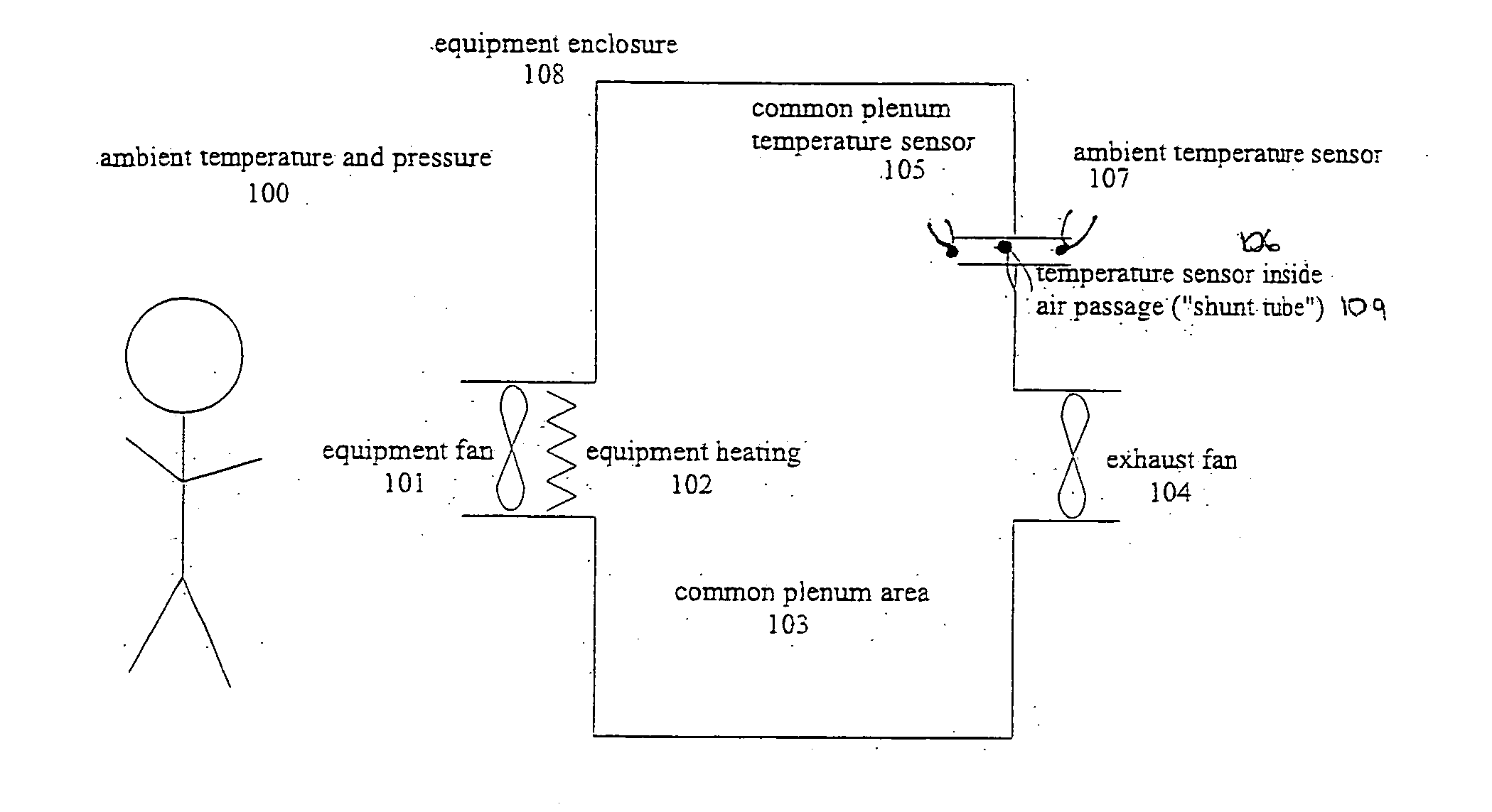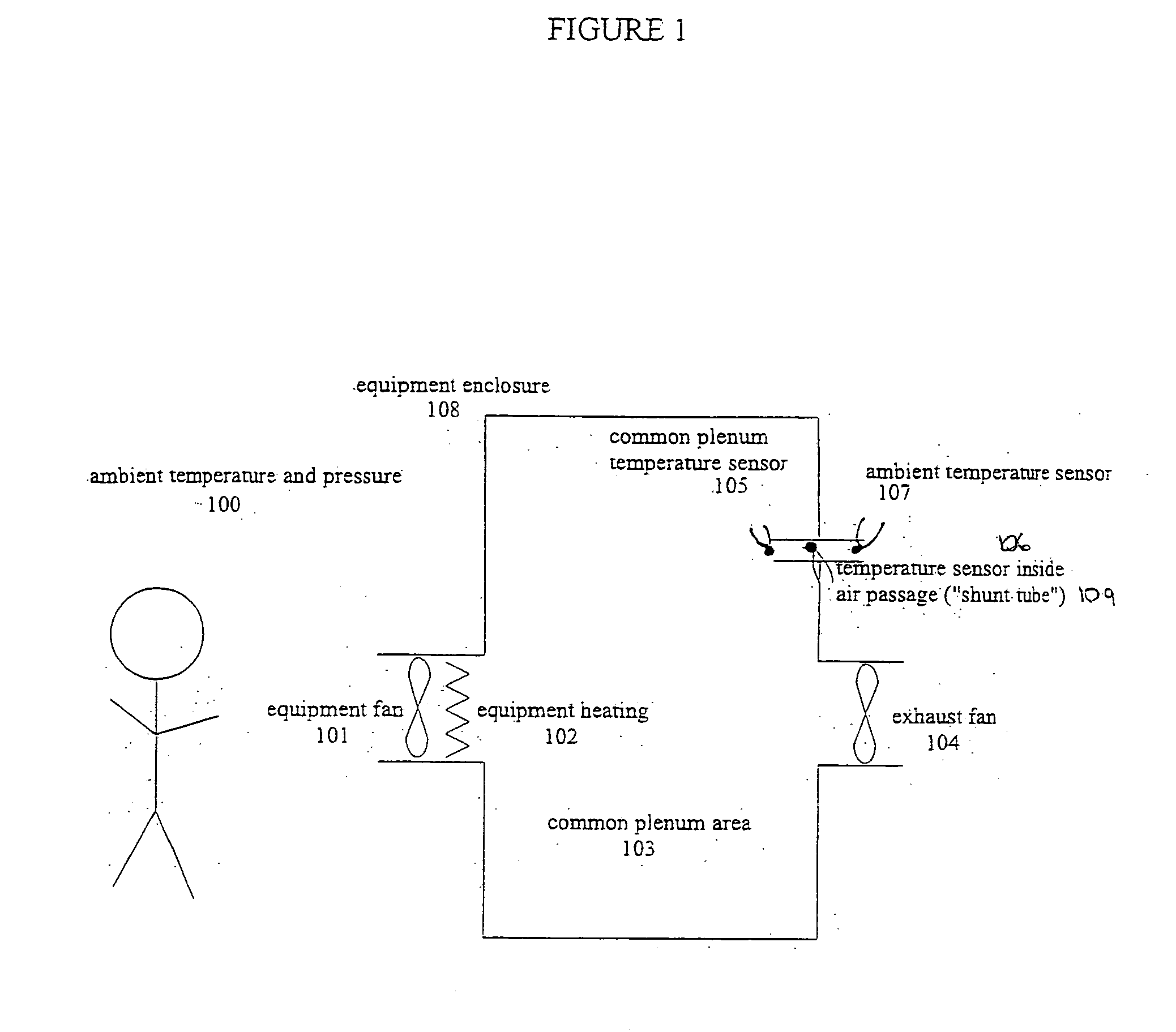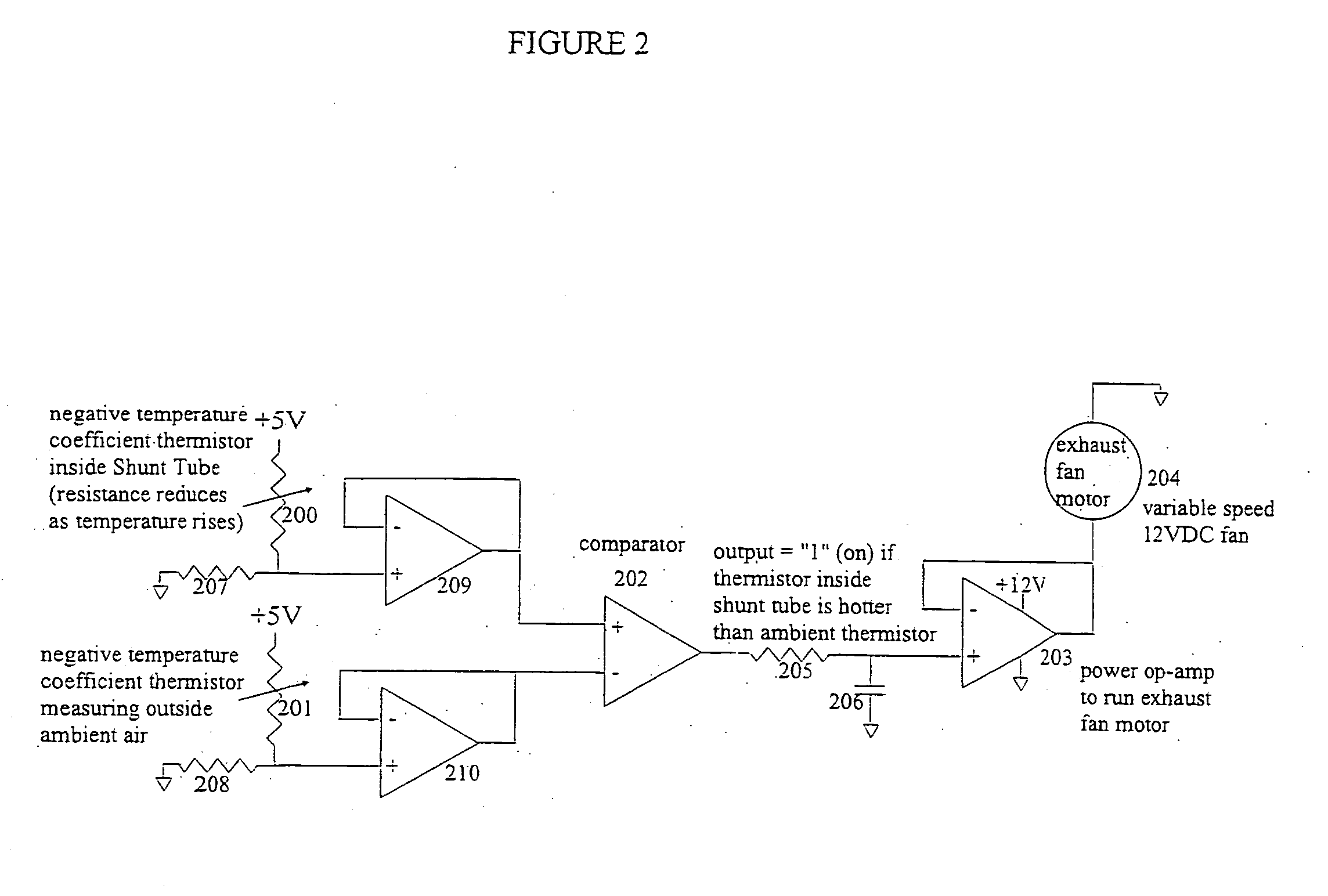Adaptive cooling method for computer rack enclosure
a technology of adaptive cooling and computer rack, which is applied in the direction of liquid/fluent solid measurement, electric apparatus casing/cabinet/drawer, instruments, etc., can solve the problems of low pressure range, low cost of pressure transducers, and inability to accurately measure this low pressure range. , to achieve the effect of low cos
- Summary
- Abstract
- Description
- Claims
- Application Information
AI Technical Summary
Benefits of technology
Problems solved by technology
Method used
Image
Examples
Embodiment Construction
[0019] A description of preferred embodiments of the invention follows.
[0020] One basic CFM difference detection method according to the invention shown in FIG. 1. The technique involves an equipment rack or enclosure (108) that has at least one piece of equipment (such as a computer) with a fan (101) that blows air into a common plenum area (103). The equipment also generates heat (102) so that the air that goes into the common plenum area is heated above ambient temperature. The equipment enclosure also has an exhaust fan (104) that is meant to exhaust the heated air from the common plenum area, at the same CFM as is being introduced into the common plenum area, by the equipment fan (101). Temperature sensors include plenum sensor (105) for measuring the temperature of the air in the common area (103), ambient sensor (107), for measuring the temperature of the ambient room air (100), and sensor (106) for measuring the temperature of the air inside a small air passage (“shunt tube...
PUM
 Login to View More
Login to View More Abstract
Description
Claims
Application Information
 Login to View More
Login to View More - R&D
- Intellectual Property
- Life Sciences
- Materials
- Tech Scout
- Unparalleled Data Quality
- Higher Quality Content
- 60% Fewer Hallucinations
Browse by: Latest US Patents, China's latest patents, Technical Efficacy Thesaurus, Application Domain, Technology Topic, Popular Technical Reports.
© 2025 PatSnap. All rights reserved.Legal|Privacy policy|Modern Slavery Act Transparency Statement|Sitemap|About US| Contact US: help@patsnap.com



